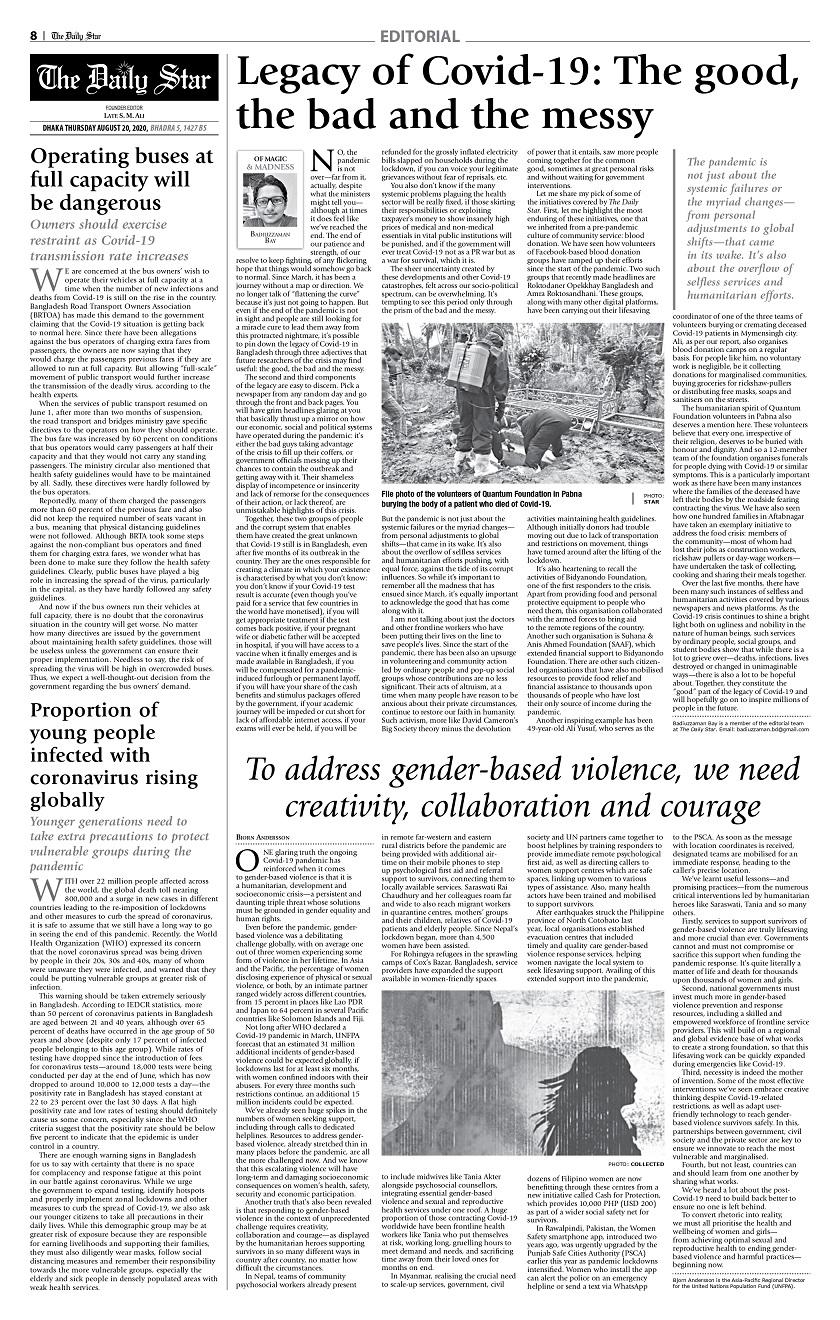The mystery of nine dead zebras over a period of three weeks at the Bangabandhu Safari Park in Gazipur has been solved. Experts identified bacterial infections and infighting during the mating season as the causes of death of those striped animals. The media sensation over the sad end of these gorgeous creatures, native to Africa, has alerted the authorities, and they have promised better care for the herd in the park, where captivity is given an air of freedom.
The black gloom that shrouded the incident is beginning to be replaced by a bright white possibility. Life is like a zebra—there is usually a white stripe after a black one. The pattern, in its repetitive form, is quite symbolic of our walk of life. When the visual symmetry was replicated to construct the first ever pedestrian crossing in Slough, England on October 31, 1951, a local MP compared the initiative with the striped animal. The name stuck. Zebra crossings have become a part of our everyday lingo. Chances are that you use a zebra crossing every day without realising their colour scheme and significance. Worryingly though, one news outlet recently asked random drivers and passers-by whether they knew what a zebra crossing was; most had no clue. Maybe jaywalking has become the new normal in a city where traffic rules do not work. Maybe life cannot be seen in black and white anymore.
For all latest news, follow The Daily Star's Google News channel.
Nevertheless, the alternate patterns of hope and sorrow dictate life. Humans live on, knowing life goes on despite sorrows; the black stripes of life will be momentarily or eventually be replaced by white ones—either here or hereafter. It is hope that springs life.
The protesters at Shahjalal University of Science and Technology (SUST) donned white shrouds and brought out a funeral procession, vowing to brace death to bring new life to their campus. They wanted an end to the miseries caused by the indifference of the authorities. The protest spread fast across other campuses. The dubious actions of police and pro-government student body, and the mysterious inactions of the university administration, added fuel to the fire. Social media started presenting the events in all their colours. The technicolour focus of the agitation was, however, given a monochrome treatment. The supply line of the movement was strategically cut off. Suspicions were raised about their funding sources and ulterior motives. A group of vice-chancellors expressed their solidarity with their marooned colleague to act as a counter-pressure group.

The original protest of changing the quality of dormitory life veered from its course once subjected to police brutality and invisible interventions. The next phase of the protest focused on the resignation of the supreme guardian of the university, who not only failed to protect his students, but allegedly instigated the police attack. Students corralled their vice-chancellor, while security forces cordoned off the protesters. The freedom to protest in captivity soon proved illusory. One sci-fi writer flew in with a ray of hope. He appeared as a saviour to save grace for both parties. The protesters reluctantly broke their fast with the hope that their demands would be delivered. An opportunity has now been created for the vice-chancellor in question to have an honourable exit. One black stripe is crossed for now, to move on to the subsequent white stripe.
Let's review the two striped realities. The authorities have promised that they would resolve the plights of the zebras in Gazipur Safari Park as well as the students of SUST. It is important that we understand what ailed them in the first place. For the animals from the savannas, the reduced perimeter to roam around caused an unhygienic and unliveable condition where bacteria thrived. The infection could have also spread through their diets. Then there was infighting. The death of nine animals has probably saved the whole herd, which will now be taken under special custody.
Can we expect the same for the students of SUST—or any public university, for that matter? The 28 students who observed the hunger strike had a brush with death. They showed remarkable determination to press home their demands. They reminded us that a university is not just a development project with bricks and mortars or a computerised platform with hardware and software, but also a living organism. The hunger, pain, and discomfort are real. The development mantra of new buildings and infrastructures hardly looks at the existing body of students and their daily requirements. The calorie intake of a university student is a fraction of the minimum requirement suggested by World Health Organization (WHO). The food quality within the allotted budget is impossible to be improved, unless a subsidy is given. Time to be creative then.
Can the food budget be prepared based on the number of students who opt to eat at the dining of a dormitory? If one can afford or prefer to eat at a dining mess or cafeteria, one should not be considered for the meal budget. The alumni network can be used to initiate an "adopt-a-junior" programme. There should be a combination of government and personal initiatives to improve campus life. In the universities overseas, alumni members play a significant role in doling out funds and support services. Such networks strengthen the fraternity and inspire the present students to remain committed to their institutions.
It's time we saw life beyond black and white and became creative. As one philosopher puts it, "Freedom would be not to choose between black and white, but to abjure such prescribed choices."
Dr Shamsad Mortuza is the pro-vice-chancellor of the University of Liberal Arts Bangladesh (ULAB).




